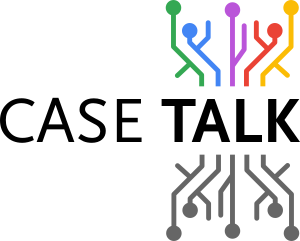Why FCO-IM Bridges the Human–Machine Understanding Gap
As AI systems become more capable, a recurring question emerges: What exactly are we teaching them?
We train AI models with vast amounts of data — text, images, logs, transactions — but training without understanding can lead to bias, inconsistency, or misinterpretation. At the same time, a growing number of AI researchers and knowledge engineers recognize the need for ontologies: structured representations of meaning that allow machines to reason, not just predict.
This is where FCO-IM (Fully Communication-Oriented Information Modeling) becomes strategically important. It connects human communication, structured meaning, and machine understanding — the very three pillars AI systems depend on.
From Raw Data to Meaningful Knowledge
When data is collected for AI training, it's often treated as a disconnected set of examples — inputs and outputs. But in reality, data is the residue of communication. Every piece of data represents a fact that someone once expressed or recorded.
FCO-IM starts at this communicative origin:
- It captures how facts are expressed in natural language
- It models the semantic structure behind those facts
- It allows those structures to be transformed into formal ontologies that machines can understand
Thus, FCO-IM can be seen as the missing bridge between raw training data and knowledge-grounded AI.
The Need for Ontologies in AI
Modern AI systems, particularly large language models, excel at recognizing patterns in unstructured data. However, they lack explicit semantics — they don't inherently "know" what their words refer to in the real world.
An ontology provides that structure:
- It defines concepts and relationships
- It allows logical reasoning
- It anchors AI understanding in a shared, explainable framework
Yet, most ontologies are still built after the fact, by interpreting data models or reverse-engineering domain knowledge. With FCO-IM, ontologies can be derived directly from the original meaning as expressed by humans — ensuring that what machines learn is rooted in authentic communication.
How FCO-IM Contributes to AI Readiness
Using CaseTalk, FCO-IM's modeling environment, organizations can:
- Capture domain facts linguistically — from documents, interviews, or transcripts
- Validate meaning with domain experts through verbalization
- Generate structured representations (OWL, RDF, SKOS) as training scaffolds for AI systems
- Align data models and knowledge models in one consistent semantic layer
This process ensures that the AI's training data and its ontology share the same semantic backbone — the same "understanding" humans use when communicating about the domain.
FCO-IM's Strategic Role in AI Development
| AI Challenge | FCO-IM Contribution |
|---|---|
| Unstructured or ambiguous data | Captures facts in clear, communicable form before structuring |
| Lack of explainability | Every model element can be verbalized in natural language |
| Ontology creation overhead | Ontologies are derived automatically from information models |
| Semantic drift between humans and machines | Models remain grounded in real communication, validated by people |
This makes FCO-IM not just a modeling method — but a semantic foundation for responsible AI.
Why Ontology and Information Modeling Must Converge
As AI systems evolve, the distinction between data models, information models, and knowledge models becomes more fluid. An AI that "learns" from data must also understand the information that data conveys, and the knowledge it implies.
FCO-IM naturally unifies these levels:
- From communication (human meaning)
- To information (structured facts)
- To data (machine representation)
- And finally to knowledge (machine reasoning)
The FCO-IM to AI Pipeline
Human Communication
↓
Fact Expressions (FCO-IM capture)
↓
Information Model (validated meaning)
↓
Ontology Generation (OWL/RDF/SKOS)
↓
AI Training Data (semantically grounded)
↓
Machine Understanding
In essence:
AI learns from data, but it must think in meaning. FCO-IM ensures the meaning is modeled, validated, and preserved — from human dialogue to machine intelligence.
Practical Applications
Organizations are already discovering how FCO-IM enhances AI initiatives:
- Training Data Curation: Ensuring consistency and completeness in datasets through fact-based validation
- Knowledge Graph Development: Building enterprise knowledge graphs from validated information models
- AI Governance: Creating traceable, explainable semantic frameworks for AI decision-making
- Domain-Specific LLMs: Grounding language models in verified domain knowledge
Conclusion
The path to more explainable, trustworthy AI runs through semantics — and semantics begin with communication. By capturing facts as they are expressed, structuring them consistently, and transforming them into ontologies, FCO-IM and CaseTalk offer a disciplined, human-centered approach to training intelligent systems.
As the boundaries blur between knowledge engineering and AI development, one truth becomes clear:
Machines can only understand us as clearly as we have understood ourselves.
FCO-IM gives us the framework — and CaseTalk the tool — to make that understanding explicit.
Ready to bridge the gap between human knowledge and AI understanding? Download CaseTalk to start building semantically-grounded models for your AI initiatives, or contact us to discuss how FCO-IM can enhance your AI training pipeline.


